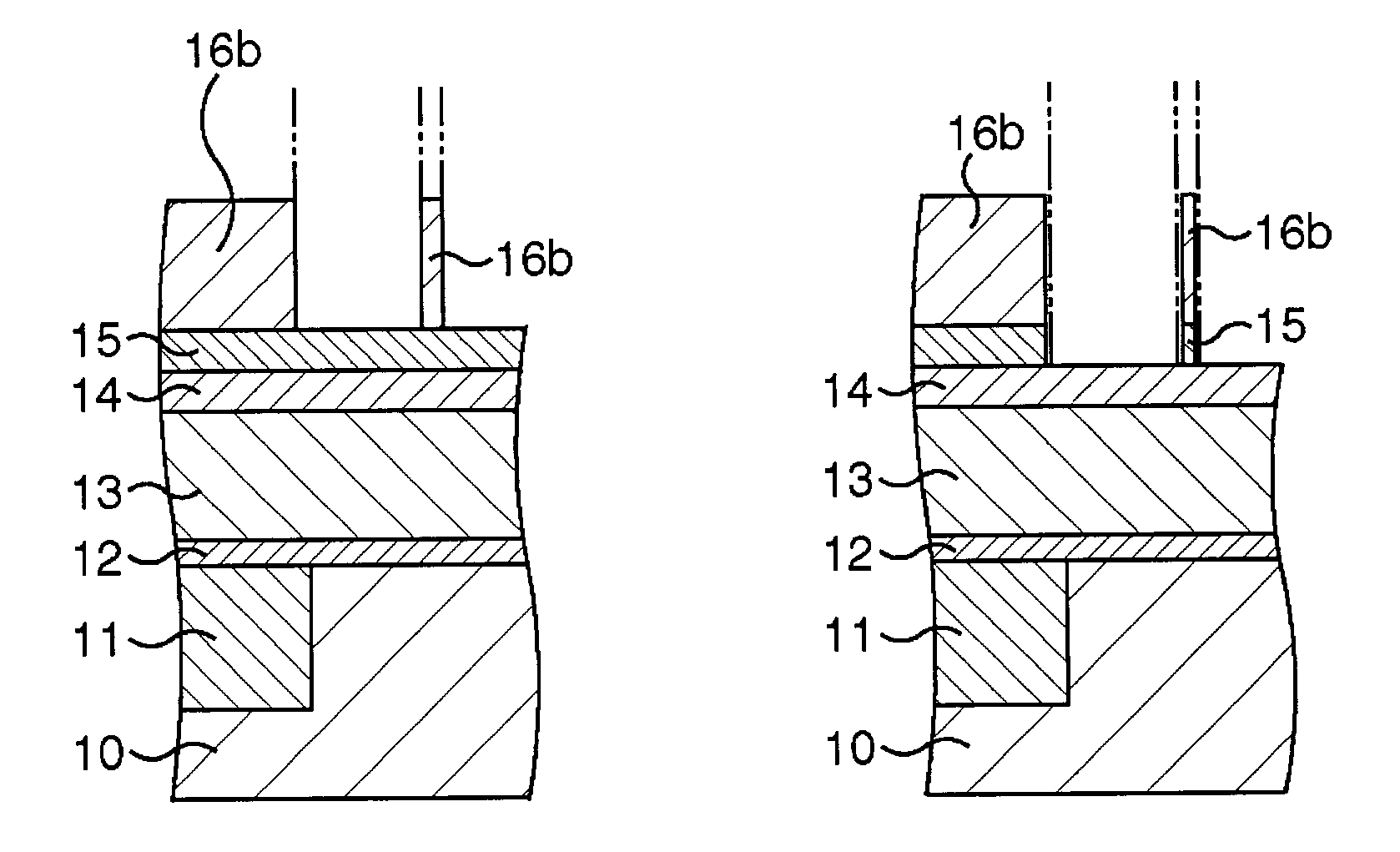Method of manufacturing semiconductor device
a manufacturing method and semiconductor technology, applied in the field of semiconductor device manufacturing, can solve the problems of wiring breakdown, difficult to secure a region of sufficient width, and insufficient phase shift effect, so as to avoid narrowing of wiring width, the gate length can be shortened
- Summary
- Abstract
- Description
- Claims
- Application Information
AI Technical Summary
Benefits of technology
Problems solved by technology
Method used
Image
Examples
first embodiment -
[0044]-First Embodiment-
[0045]The first embodiment of the present invention will be explained first. FIG. 4A to FIG. 4K are sectional views showing a method of manufacturing a semiconductor device relating to the first embodiment of the present invention in process order. Incidentally, FIG. 4A to FIG. 4K correspond to a sectional view along the line I—I in FIG. 1A. FIGS. 5A and 5B to FIGS. 8A and 8B are plan views corresponding to states shown in FIG. 4B, FIG. 4D, FIG. 4F, and FIG. 4I respectively.
[0046]First, as shown in FIG. 4A, above a semiconductor substrate 10 on the surface of which an element isolating and insulating film 11 is formed, a gate oxidation film 12, a polycrystalline silicon film 13, a hard mask 14, an antireflection film 15, and a resist film 16 are formed in sequence. The thicknesses of the gate oxidation film 12, the polycrystalline silicon film 13, the hard mask 14, the antireflection film 15, and the resist film 16 are, for instance, 2 nm, 100 nm, 50 nm, 60 n...
second embodiment -
[0059]-Second Embodiment-
[0060]The second embodiment of the present invention will be explained next. FIG. 9A to FIG. 9K are sectional views showing a method of manufacturing a semiconductor device relating to the second embodiment of the present invention in process order. Incidentally, FIG. 9A to FIG. 9K correspond to sectional views along the line I—I in FIG. 1A. FIGS. 10A and 10B to FIGS. 13A and 13B are plan views corresponding to FIG. 9B, FIG. 9E, FIG. 9G, and FIG. 9I.
[0061]First, as shown in FIG. 9A, above a semiconductor substrate 10 on the surface of which an element isolating and insulating film 11 is formed, a gate oxidation film 12, a polycrystalline silicon film 13, a hard mask 14, an antireflection film 15, and a resist film 16 are formed in sequence, similarly to the first embodiment.
[0062]Then, the resist film 16 is exposed using gate electrode formation masks shown in FIG. 3A and FIG. 3B. Concretely, a Levenson phase shift mask and a reduction projection type aligne...
PUM
| Property | Measurement | Unit |
|---|---|---|
| transmittance | aaaaa | aaaaa |
| thicknesses | aaaaa | aaaaa |
| thicknesses | aaaaa | aaaaa |
Abstract
Description
Claims
Application Information
 Login to View More
Login to View More - R&D
- Intellectual Property
- Life Sciences
- Materials
- Tech Scout
- Unparalleled Data Quality
- Higher Quality Content
- 60% Fewer Hallucinations
Browse by: Latest US Patents, China's latest patents, Technical Efficacy Thesaurus, Application Domain, Technology Topic, Popular Technical Reports.
© 2025 PatSnap. All rights reserved.Legal|Privacy policy|Modern Slavery Act Transparency Statement|Sitemap|About US| Contact US: help@patsnap.com



